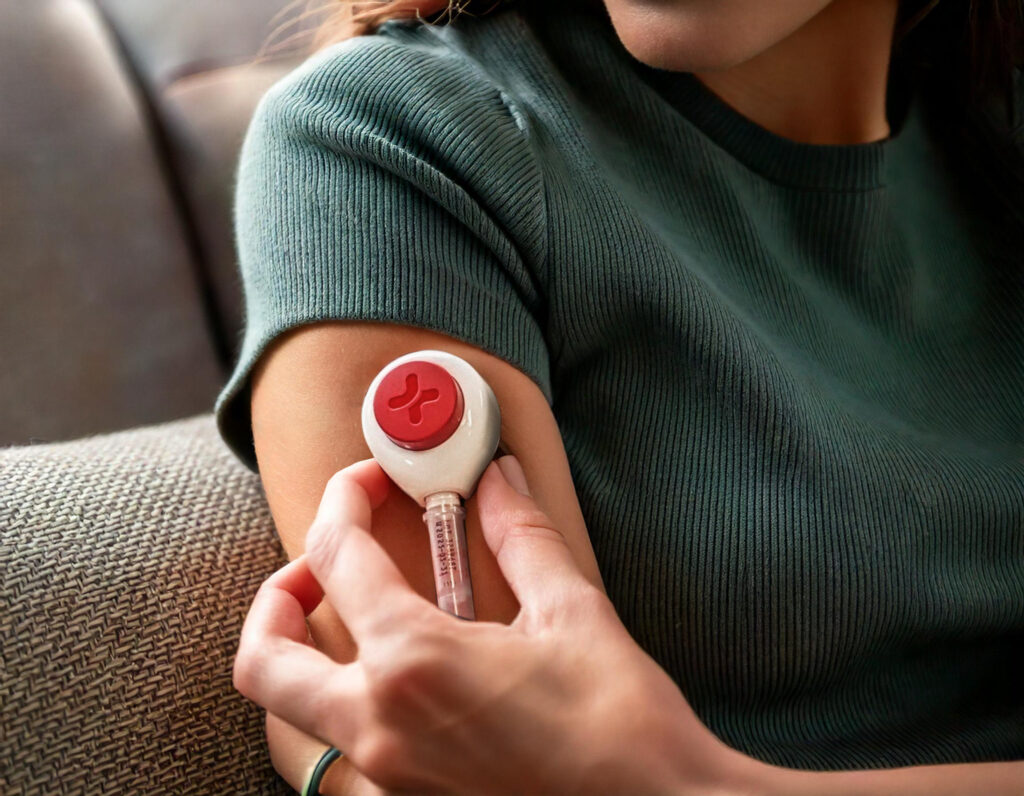
Compare Fingerstick, Venipuncture & Tasso for Screenings
Choosing the Right Modality for On-Site Biometric Screenings: Fingerstick, Venipuncture, or Tasso?
At On-Site Health Diagnostics (OHD), we believe that one size doesn’t fit all — especially when it comes to biometric screenings. The right collection modality can impact everything from employee participation to data accuracy, turnaround time, and clinical follow-up.
So how do you choose between fingerstick, venipuncture, or newer devices like the Tasso self-collection system?
Let’s break it down.
🖐️ Fingerstick Collection
What it is:
A small lancet prick is used to collect capillary blood (typically 40–80 microliters) from the fingertip.
✅ Pros:
- Quick and minimally invasive
- Ideal for point-of-care testing (immediate glucose, total cholesterol, and blood pressure results)
- Requires less setup and fewer supplies than venipuncture
- Lower cost per participant
- Works well in high-volume or short-duration events
❌ Cons:
- Limited test menu (not suitable for hormone panels, CBC, thyroid, or specialty labs)
- May not be as clinically accurate for certain analytes (especially lipid subfractions or calculated ratios)
- Difficult for cold hands, calloused fingers, or dehydrated participants
Best for:
- Wellness-only screenings with basic metrics
- Events where time or logistics are constrained
- Populations hesitant about needles
💉 Venipuncture (Phlebotomy)
What it is:
A trained phlebotomist draws venous blood from the arm using a standard blood collection tube system.
✅ Pros:
- Gold standard for clinical lab testing
- Broadest test menu (CBC, CMP, hormone levels, thyroid, PSA, HbA1c, Vitamin D, etc.)
- Enables reflex testing — automatically running additional panels from the same sample when red flags appear
- Highest data quality for long-term risk stratification
❌ Cons:
- More invasive and time-consuming
- Requires a phlebotomist and medical waste handling
- Slightly higher per-participant cost
- Participants with poor veins may be difficult to draw
Best for:
- Employers transitioning to self-funded plans who need full clinical risk insight
- Events tied to medical plan premium incentives
- Populations with a high prevalence of chronic risk
📦 Tasso Device (Capillary Self-Collection)
What it is:
A wearable, vacuum-sealed device that adheres to the upper arm and collects capillary blood without a needle puncture.
✅ Pros:
- Self-administered and nearly painless
- Great for remote workforces or “screen-from-home” options
- No need for a nurse or phlebotomist onsite
- Collects enough volume for lab-based testing (within test menu limits)
❌ Cons:
- Limited analyte compatibility (not suitable for CBC, large panels, or immediate results)
- Requires shipping to a lab, adding 1–2 days for results
- Training needed for proper placement and collection
- Higher per-unit cost compared to fingerstick
Best for:
- Remote or hybrid populations
- Events with a “screen-at-home” offering
- Employees hesitant about in-person testing
🧠 So… Which One Should You Choose?
| Criteria | Fingerstick | Venipuncture | Tasso Device |
| Test Menu Breadth | ❌ Limited | ✅ Broad | ⚠️ Moderate |
| On-Site Speed & Simplicity | ✅ Fast | ❌ Slower | ✅ Easy (for remote) |
| Participant Comfort | ✅ High | ❌ Moderate | ✅ High |
| Best for Remote Staff | ❌ No | ❌ No | ✅ Yes |
| Clinical Accuracy & Depth | ⚠️ Moderate | ✅ High | ⚠️ Moderate |
Recommendation:
- Use venipuncture for deeper clinical panels or pre-self-funding risk modeling.
- Deploy fingerstick at basic wellness events or as a first-touch offering.
- Leverage Tasso for follow-up screenings or hybrid teams needing flexibility.
🔄 OHD’s Flexible Screening Programs
We offer all three modalities — and even combinations of them — based on your program goals, clinical targets, and employee population.
Need help choosing what’s best for your workforce? Let’s talk.
📨 info@onsitehd.com
📍 610 Coit Rd, Suite 200, Plano, TX 75075
📞 877-366-7483